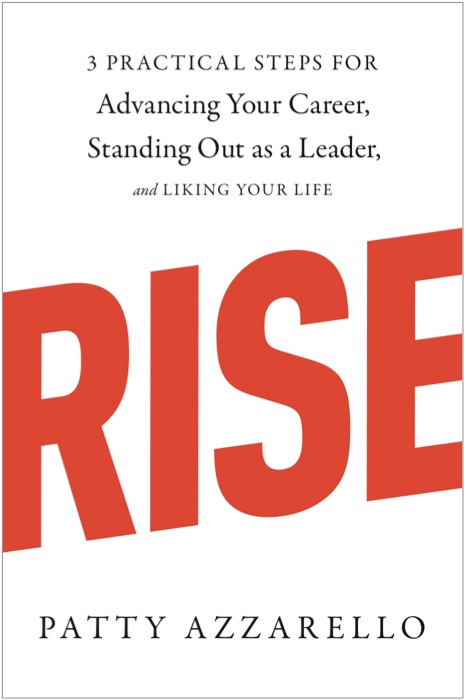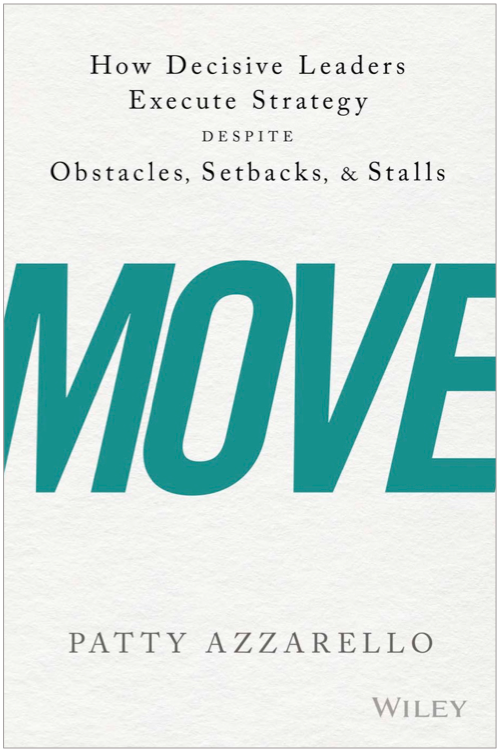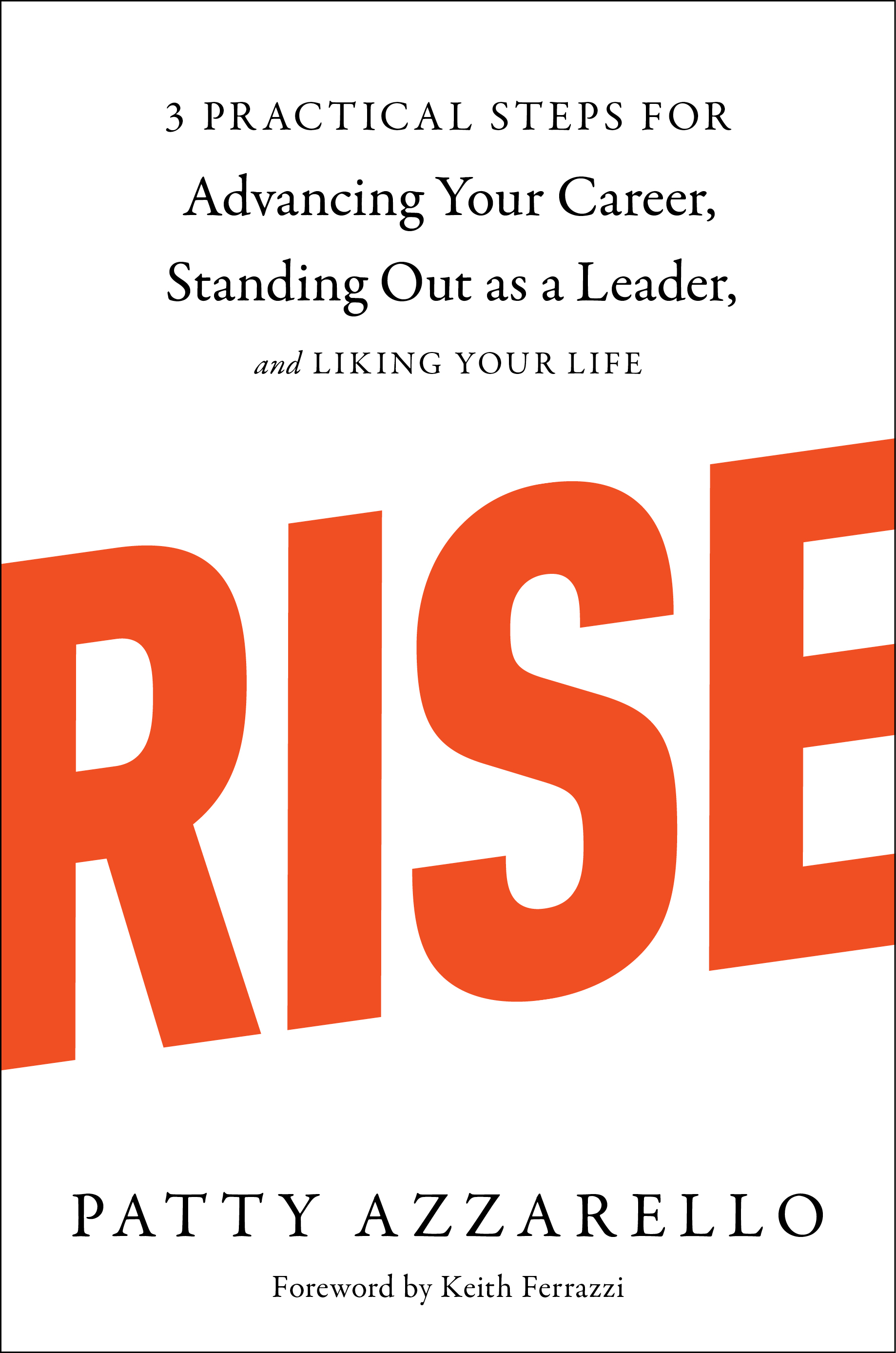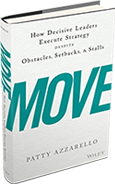In this month’s Business Leadership webinar I had the pleasure of interviewing Dr. Richard Rumelt about his book:
Good Strategy, Bad Strategy: The Difference and Why it Matters.
Below are some notes from our discussion.
You can download the Webinar here:
DOWNLOAD: GOOD STRATEGY, BAD STRATEGY
(Downloads are free to members of Azzarello Group)
The Book
First and foremost, get this book!
It’s enjoyable to read and it is the most useful book on Strategy I have seen to date.
I keep giving my copy away and re-buying it!
And as Richard mentioned in the webinar — it’s the only book on bad strategy out there!
.
Bad Strategy: (The Big Idea)
This really was a breakthrough idea for me.
The problem in most companies is not merely the lack of a Good Strategy, it’s that there is an active Bad Strategy in its place.
I have run up against this countless times in my work with exec teams as I help them to focus on what they are going to DO.
Strategy is about what you are Doing
Richard connected the dots for me so directly by stating simply that Good Strategy is about what you are DOING.
Bad strategy in contrast, often takes the form of talking. Talking about big ambitions and vague goals that no one knows how to achieve — using high-sounding words like “growth” and “shareholder value”, or “retain the best talent” or “maintain a culture of innovation”.
This makes Bad Strategy because these things don’t tell you what to DO. But it is a tempting trap because no one is going to argue with them. It’s Bad Strategy because it’s like a quarterback saying, “Let’s win”.
In the book Richard covers several forms of bad strategy and why they flourish. In the webinar he emphasized a couple of them, with suggestions to overcome them:
Bad Strategy: Fluff
Another thing I love about Richard’s approach is how he says: Good strategy is simple and clear and does not take a thick deck of powerpoint slides to explain.
Organizations love to talk about their vague ambitions in an overly complicated way. He provides many funny examples of this in the book.
What he advises: As a first defense, call it out. Point to it. Label it as Bad Strategy. Remind everyone that strategy is not about ambitions, it is about what we are DOING.
An approach: make a list of the 10 most important things you can DO to improve the business. This makes you think about both what is important AND what is do-able. Good strategy is at the intersection of those 2 ideas.
Bad Strategy: Failure to recognize or define the challenge
From the book:
If you fail to identify and analyze the obstacles, you don’t have a strategy. Instead you have either a stretch goal, a budget, or a list of things you wish would happen … or a belief that pushing on various levers will magically cause growth.
I can think of so many “strategies” I have seen that were actually one of these things.
In the webinar Richard noted that business people have an allergy to talking about problems. It makes people uncomfortable on an emotional level. One of the jobs of being a strategist is to overcome those emotional responses.
He went on to talk about the kryptonite to bad strategy is a careful diagnosis about the nature of the challenge you are facing.
The diagnosis has to be coupled with real thinking about why it is difficult. Strategy requires imaginative, competent, problem solving. If we don’t define the problem, we won’t get the insights to build a good strategy.
He gave an example about a strategy to fix the school system in the US, and noted that if you define the problem as low test scores, that would drive a completely different strategy (what you would DO) than if you described the problem as high drop out rates.
If your strategy does not define the problem you are solving, it is a Bad Strategy.
Not Templates
Richard also talked about how template based planning is very popular. This is when you fill out lots of forms to create your strategy: Vision, Mission, Goals, Key Strategies.
Templates on their own do not create good strategy because strategy must answer “how are we going to solve the most significant barrier to forward progress?”
It requires a willingness to think about problems that you don’t know the answer to up front — something business people try very hard to avoid because it makes them uncomfortable.
Good Strategy (the Kernel)
In his book, and in the webinar Richard shared with us the 3 critical building blocks of a Good Strategy, which he refers to as The Kernel.
* The Diagnosis
* Guiding Policies – how do we deal with this problem?
* Coordinated Actions
Unlike the template based approach, these three elements require new thinking, facing the toughest problem head on, coming up with guiding principles to focus decisions, and creating a cohesive, coordinated response to an important challenge.
A strategy that fails to define a variety of plausible and feasible immediate actions is missing a critical component.
The kernel gives you the sense of what Good Strategy looks like. He described some examples and noted if any one of these three is missing, you’ve got a Bad Strategy.
Focus
Good strategies focus resources on getting the right things done, vs. a list of “hoped-for” outcomes.
…in many situations, the main impediment to action is the forlorn hope that certain painful choices or actions can be avoided – that the whole long list of hoped-for priorities can all be achieved.
I have been in this meeting!
Also… a change in strategy will make some people worse off. Hence, there will be powerful forces opposed to almost any change in strategy.
So that basically means that there will be powerful forces opposed to any Good Strategy! Yet another reason why Bad Strategy flourishes.
Focus is hard. People don’t like it. They want to do everything.
Too many internal stakeholders
If you imagine your task as satisfying all the stakeholders, you can’t do it.
Internal stakeholders in the company can block Good Strategy.
I really appreciated Richard’s straightforward, reality check on this point. If you don’t have the power to say no, you will fail to focus. You just can’t do it.
Outside View
Richard commented that the best way to overcome internal stakeholder pressure is to have an outside point of view. In the webinar, he told a great story about Steve Jobs taking the outside view in the development of the iPhone, a key factor in its remarkable success with customers.
Finding the advantage
A comment in the book is that a winning business tends to be one whose offerings are most preferred by customers. (D’oh!)
I asked Richard about this because I know I have been in businesses where it is damn hard to find an advantage! The competition had better, cheaper products, better channels, etc.
In the book Richard talks about how to find the inner logic that reveals the true advantage of an organization.
I asked him, Where do you start to find your advantage?
I loved his answer which was that every organization that is alive has an advantage — when you don’t have any advantage at all you are dead. The fact that you are in business, and people are buying your products means you have an advantage.
Where you get into trouble it to try to take that advantage and spread it way too far — spread it bigger than you deserve to be.
This brought to mind the organizations I see that over-commit themselves to things they can’t possibly deliver. I love his phrase, “spreading your advantage bigger than you deserve to be”.
What he advised was to instead, create your advantage through specialization and investment in one area you can excel.
My take: you are not under-resourced you are over-committed. Focus on building your advantage at the size you deserve to be, and grow from there. This is another thought that business people hate! Alas, more Bad Strategy.
Overcome your myopia
We closed the conversation with a challenge Richard leaves us with in the book to overcome our own myopia, and to learn to question our judgment.
He said, our ideas are like our children, we are fond of them, we admire them. It’s a tough mental exercise to throw them away. We need an outside view of who we are and what we are thinking about. Richard uses a virtual advisory board who he “channels” in different situations to challenge his own thinking. I do this as well.
Creating Good Strategy
I want to mention that the second half of Good Strategy, Bad Strategy is packed with practical insights and actionable ideas on creating good strategy. There was no way we could talk about it all in half hour webinar. This is not one of those one-idea business books, where you’ve got the point once you finish reading the subtitle.
So get Richard Rumelt’s book, Good Strategy, Bad Strategy: The Difference and Why it Matters.
Use it as a weapon against Bad Strategy and as a practical guide for the creative thinking and problem solving necessary for Good Strategy.
It is available anywhere books are sold, or online at www.goodbadstrategy.com
You can find more about Richard’s work and thoughts on strategy at his blog www.StrategyLand.com
Want more?
You can download the Webinar of our conversation here:
DOWNLOAD: GOOD STRATEGY, BAD STRATEGY
(Downloads are free to members of Azzarello Group)
Learn about membership.

Richard Rumelt, is one of the top business strategy experts in the world. He is a professor, consultant, and the best selling author of “Good Strategy Bad Strategy: The Difference and why it matters.”
In addition to his academic work, Richard is a consultant to numerous firms, non-profit organizations, the Department of Defense, and several governments.
He earned Bachelor’s and Master’s degrees in Electrical Engineering from the University of California, Berkeley. He worked as a systems engineer at the Jet Propulsion Laboratories, then studied decision sciences and corporate strategy at the Harvard Business School, receiving a PhD.
Richard was on the faculties of Harvard Business School and UCLA,
And headed the Corporate Renewal Initiative at INSEAD, a research/intervention center devoted to the study and practice of corporate transformation.
He was a founding member of the Strategic Management Society and served as its president.
Richard is also an avid skier and mountain climber
Was this useful?
If you found this article useful, please help me share it (share button below) with others and encourage them to subscribe to this Blog for free.
About Patty
Patty Azzarello is an executive, best-selling author, speaker and CEO/Business Advisor. She became the youngest general manager at HP at the age of 33, ran a billion dollar software business at 35 and became a CEO for the first time at 38 (all without turning into a self-centered, miserable jerk)
You can find Patty at www.AzzarelloGroup.com, follow her on twitter or facebook, or read her book RISE…3 Practical Steps for Advancing Your Career, Standing Out as a Leader, AND Liking Your Life.





